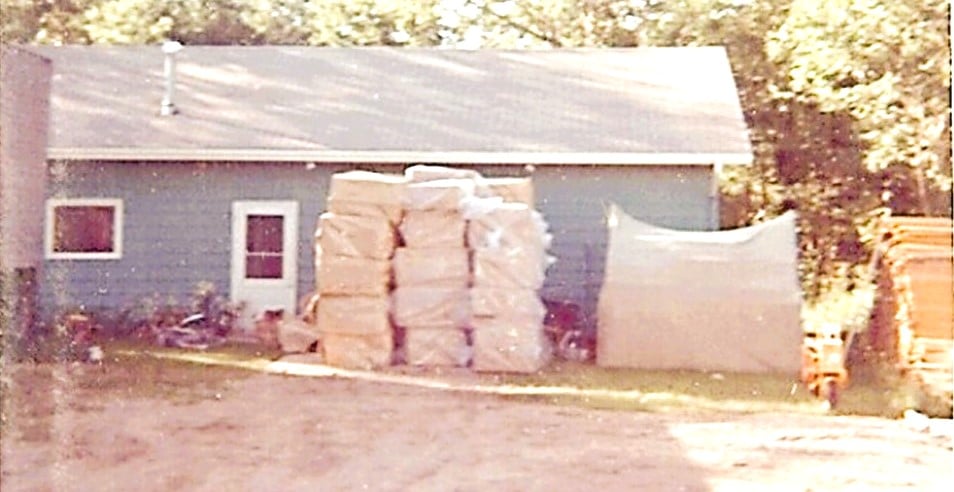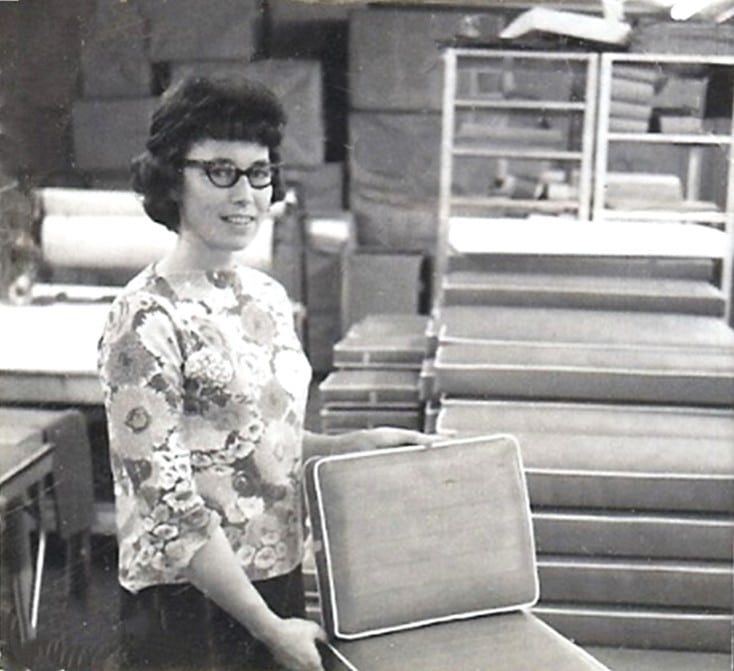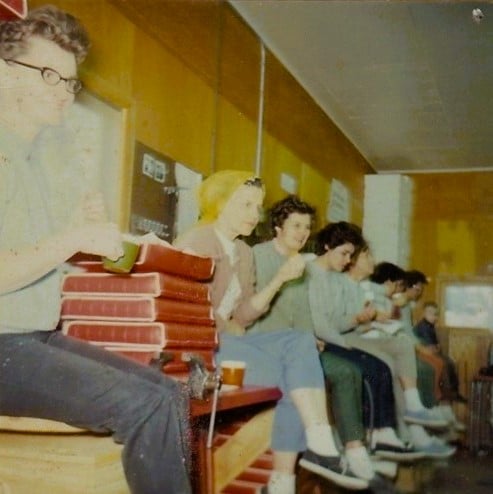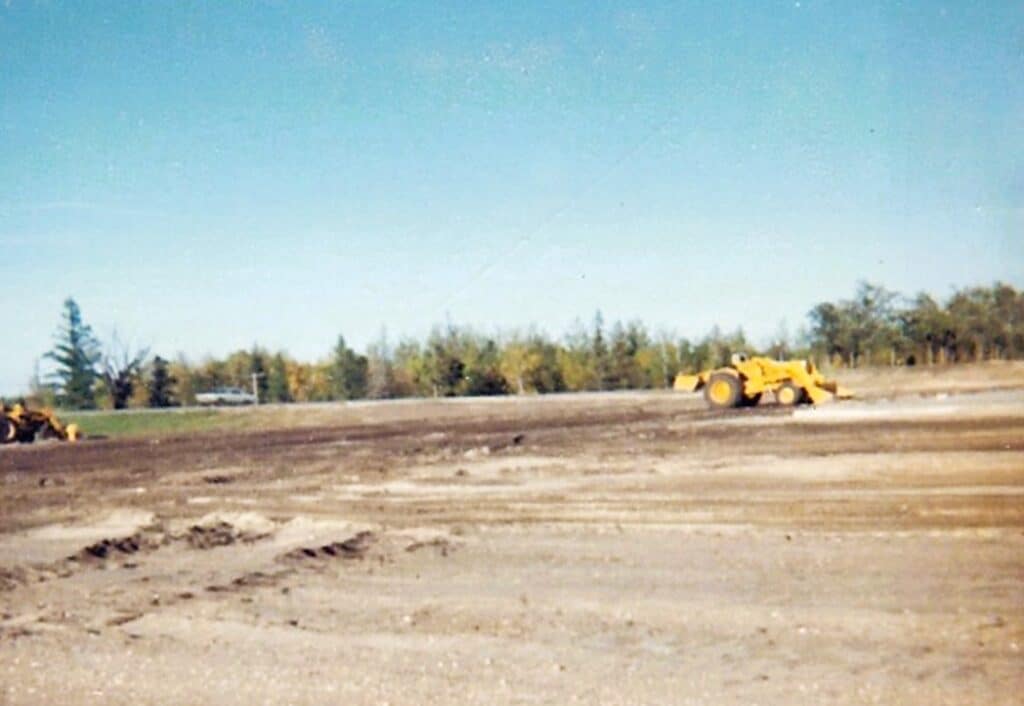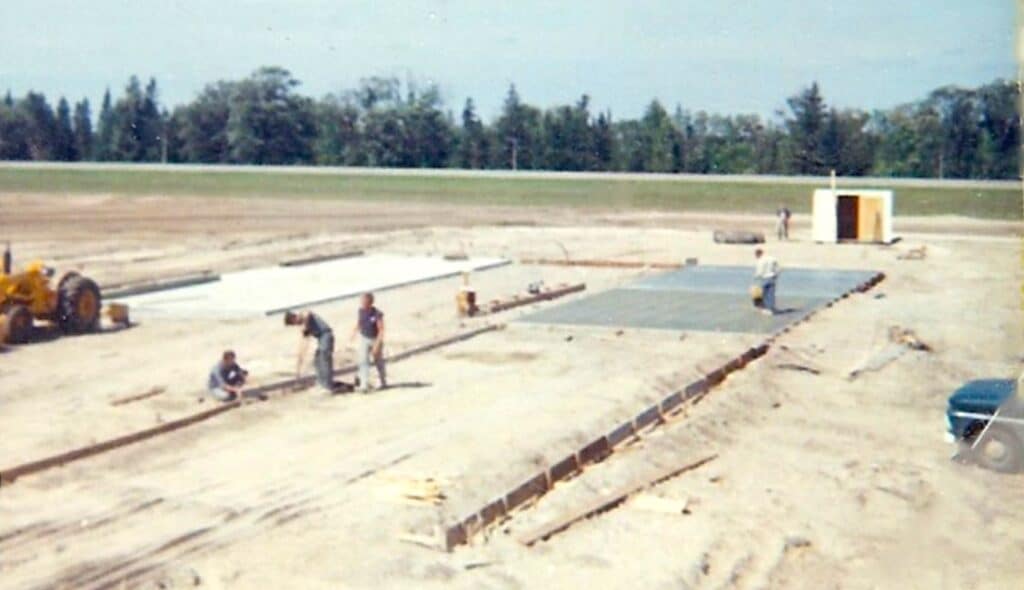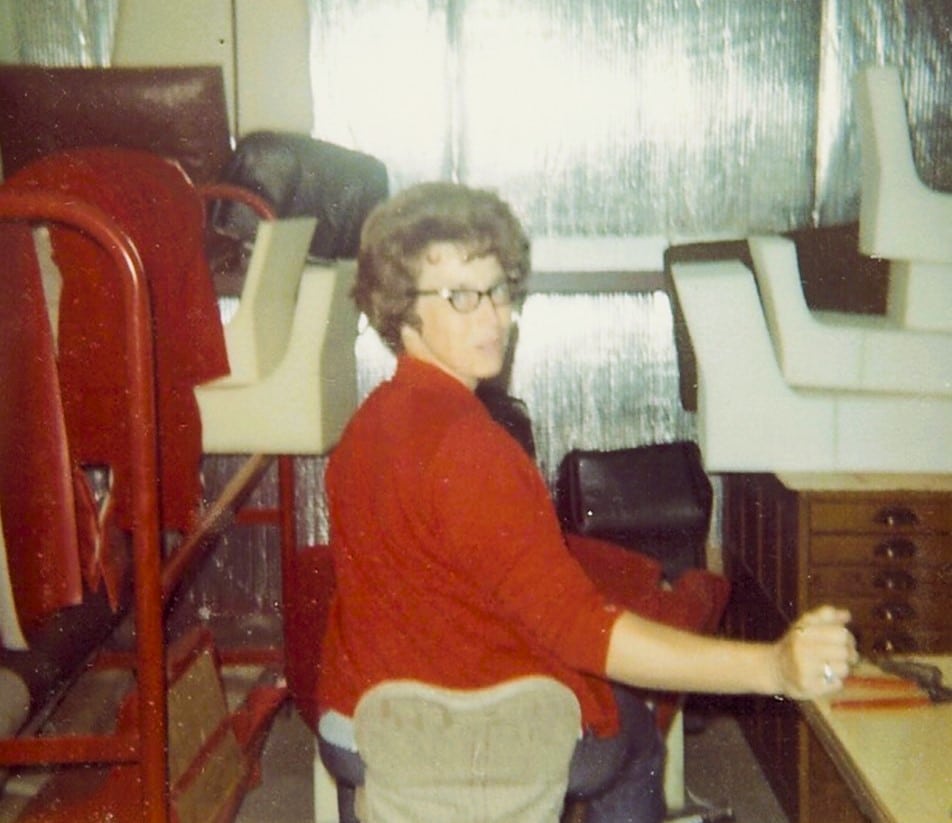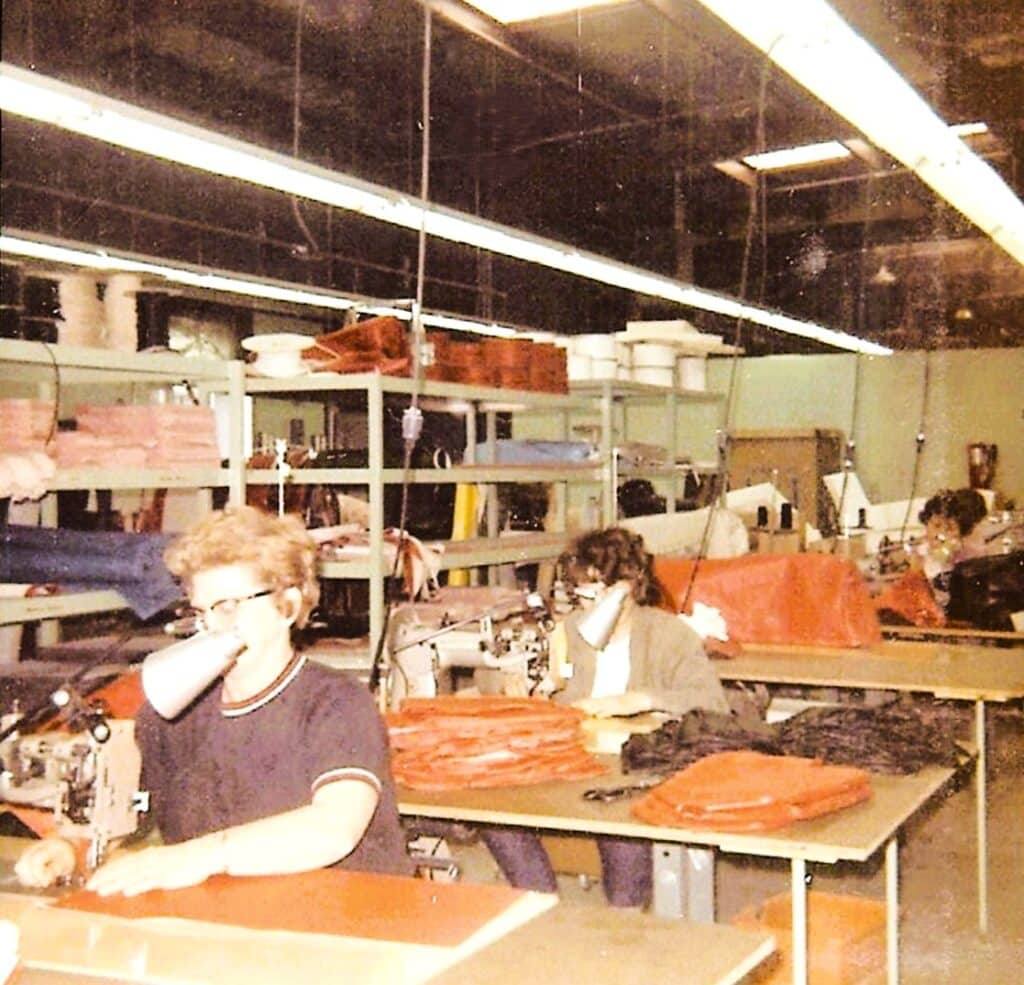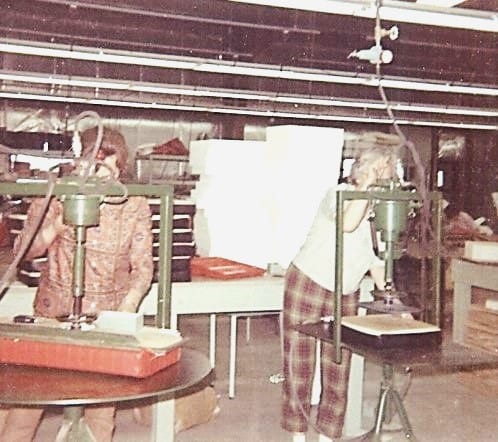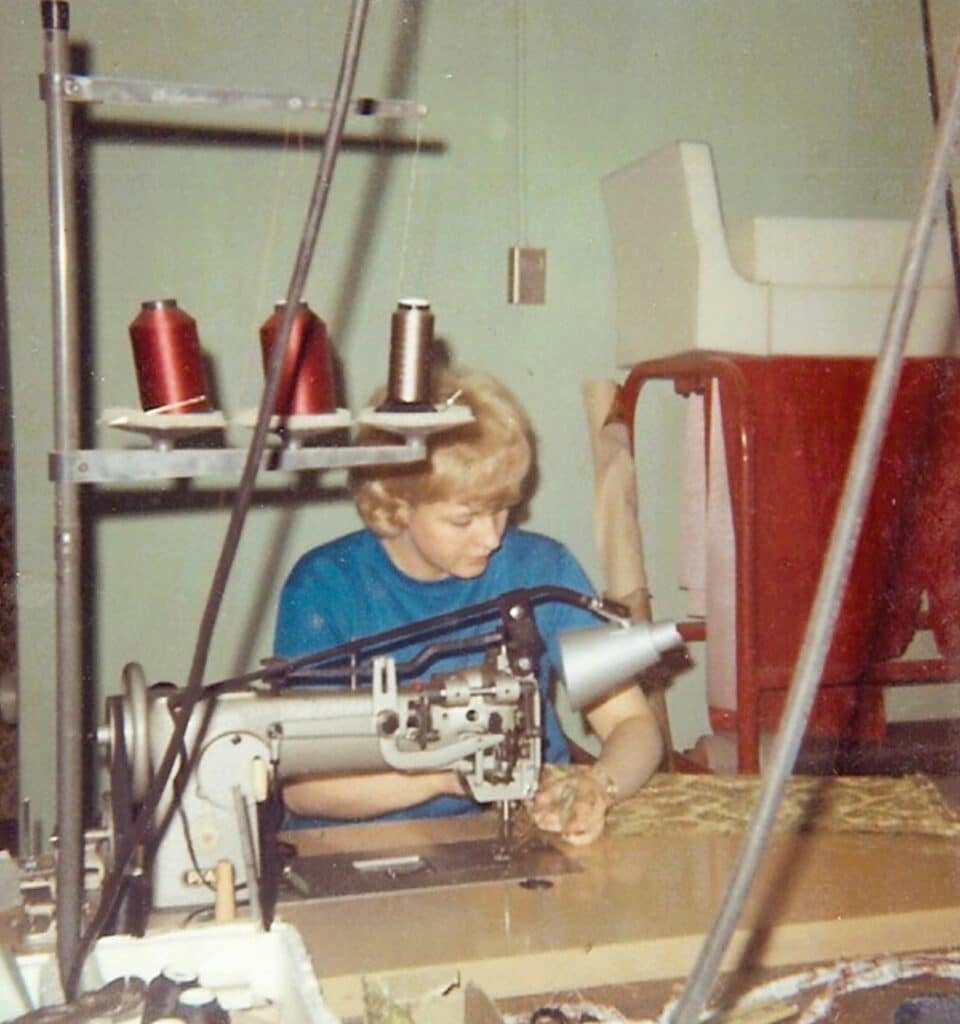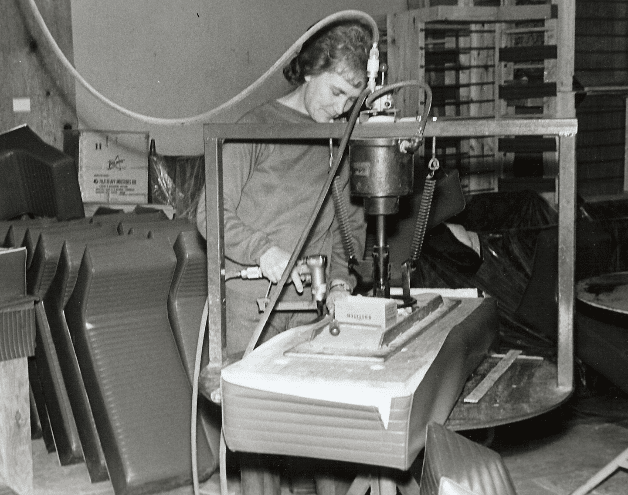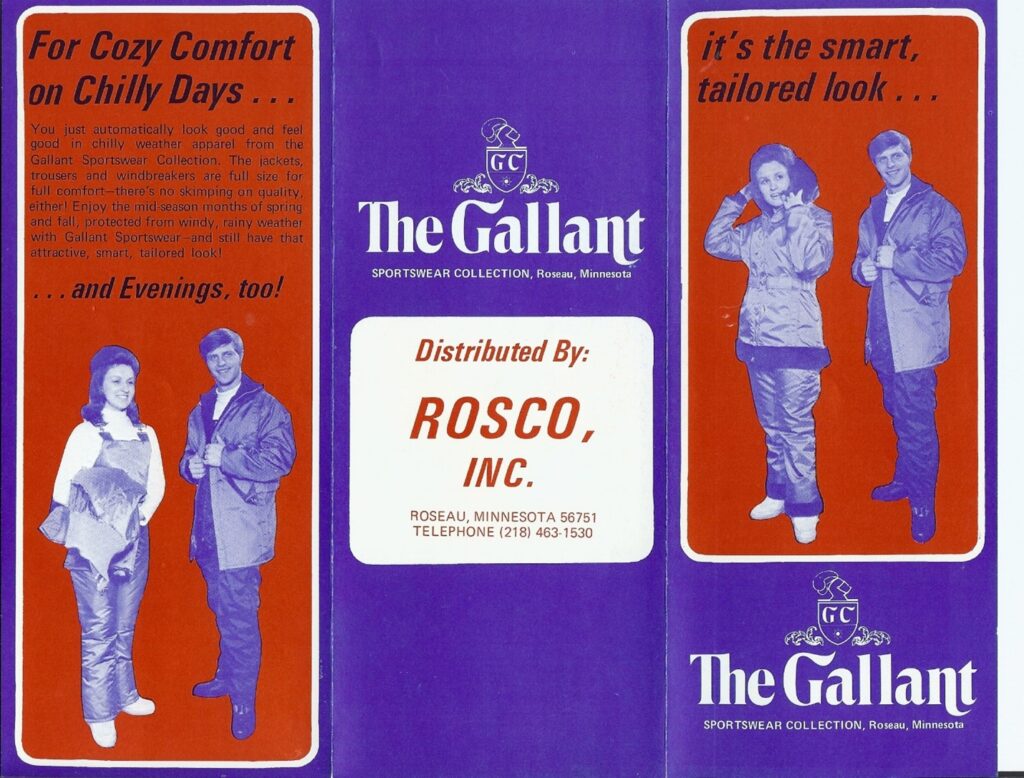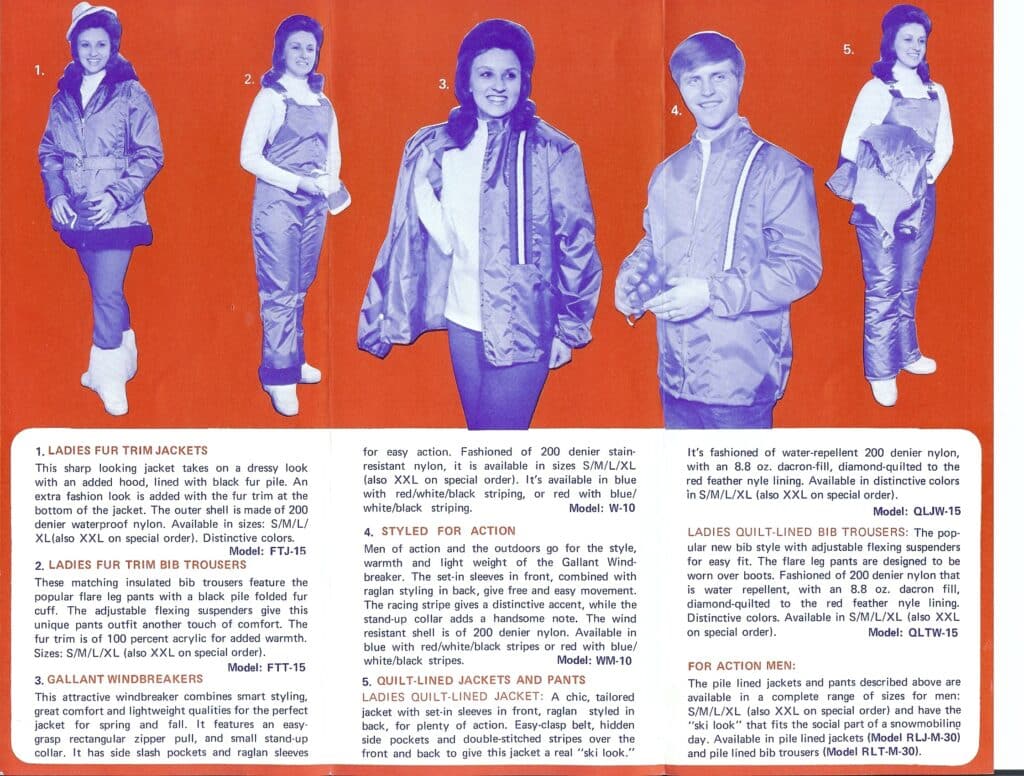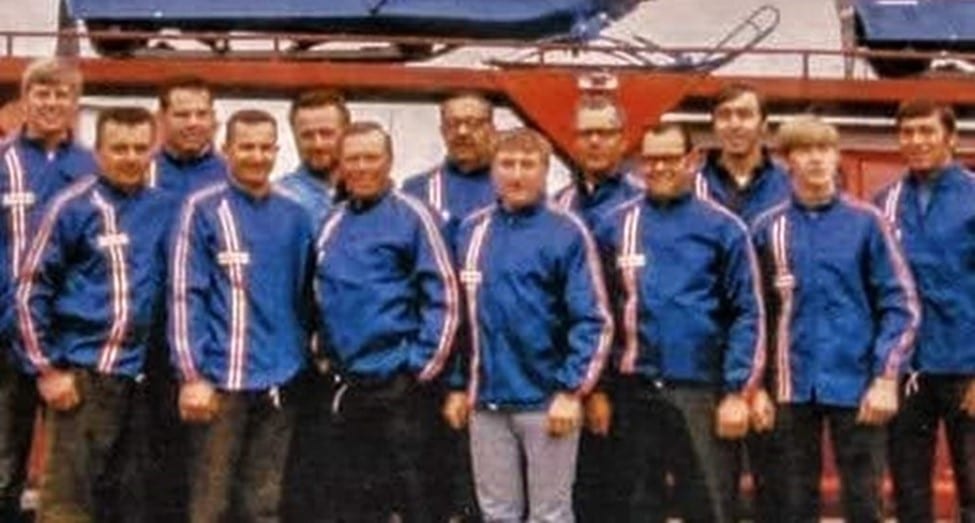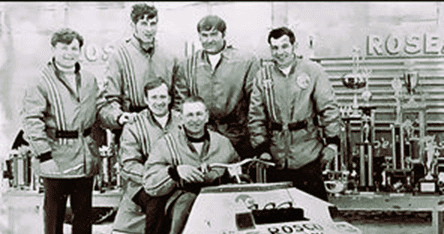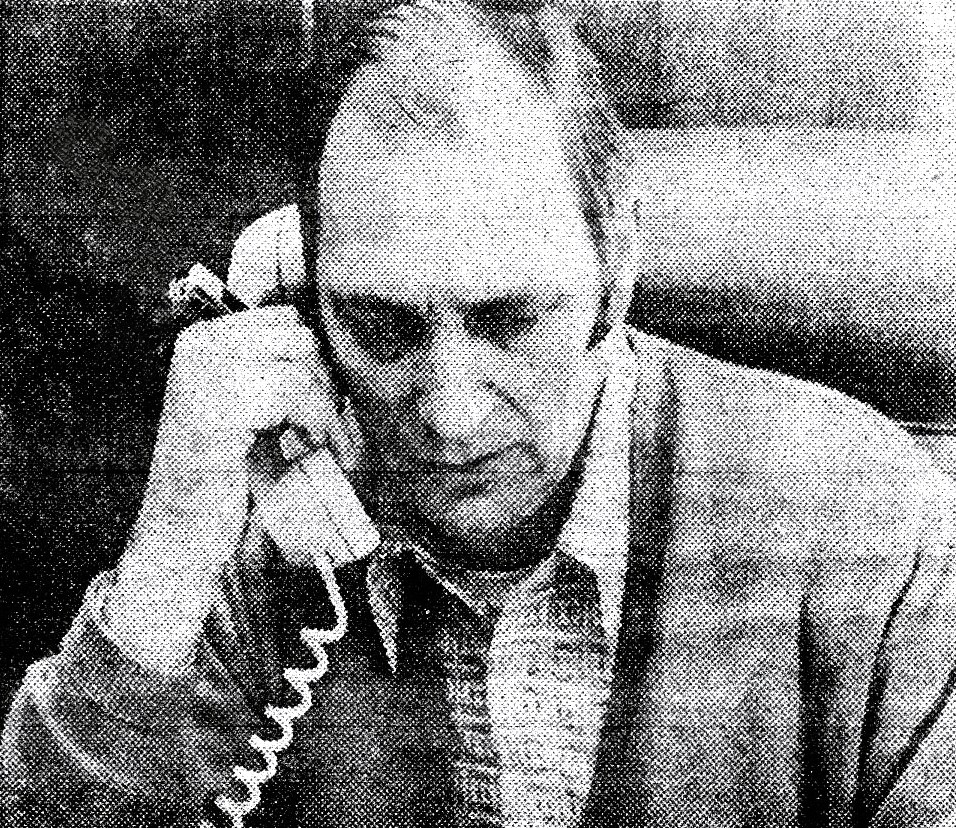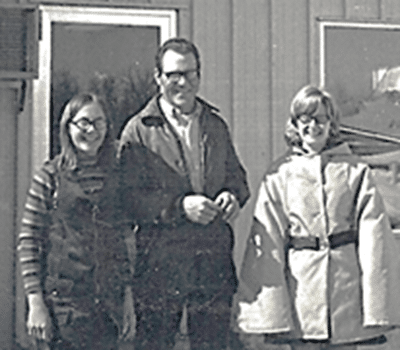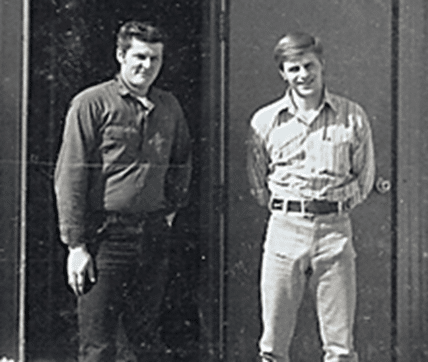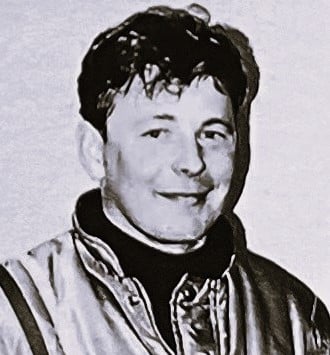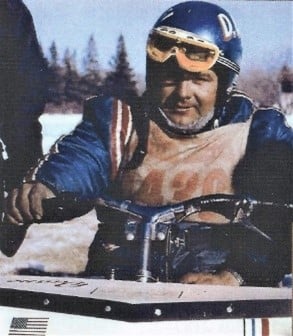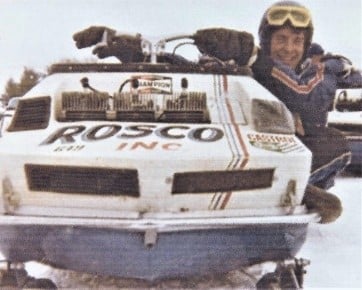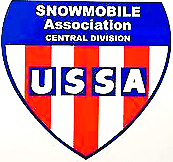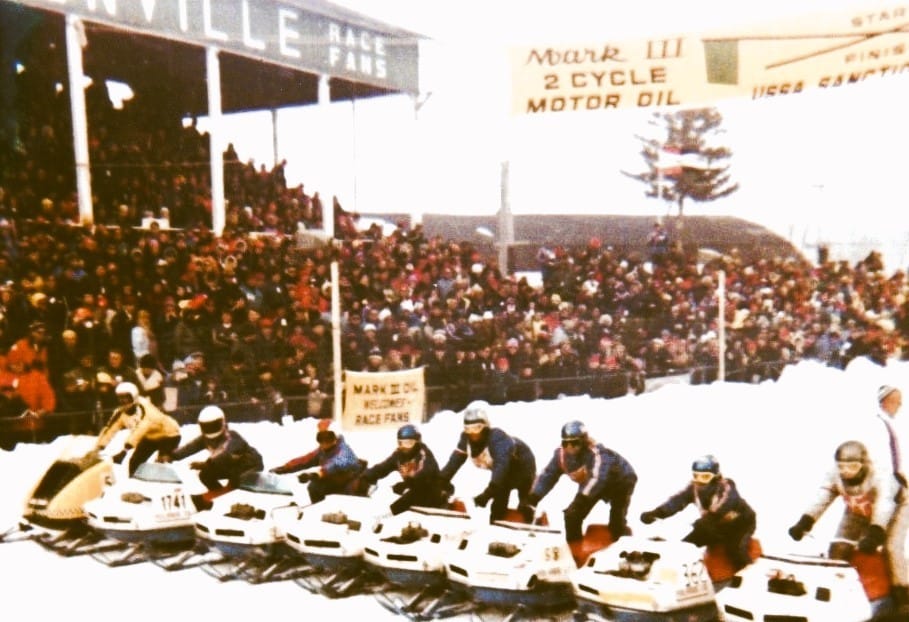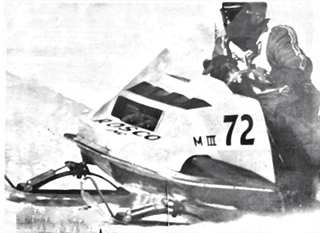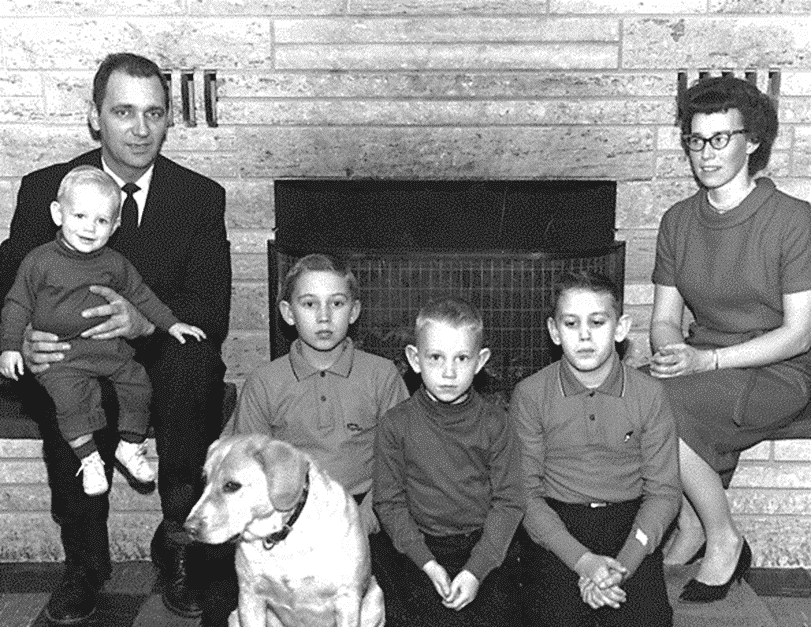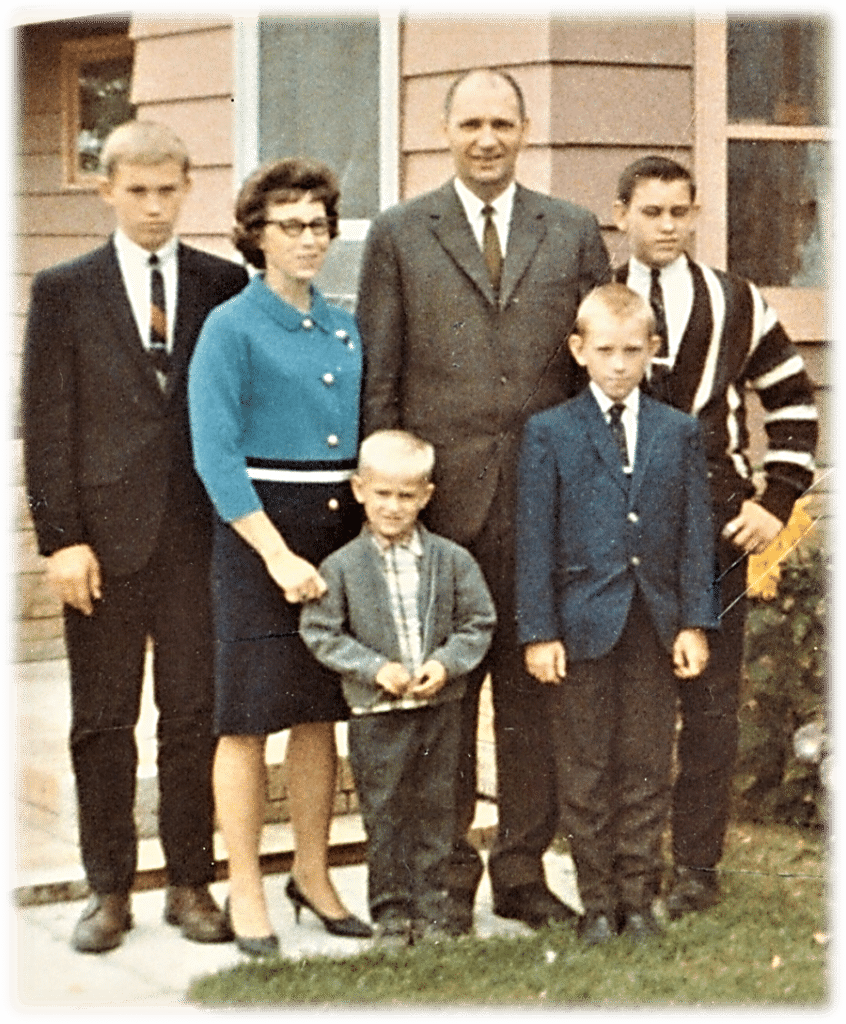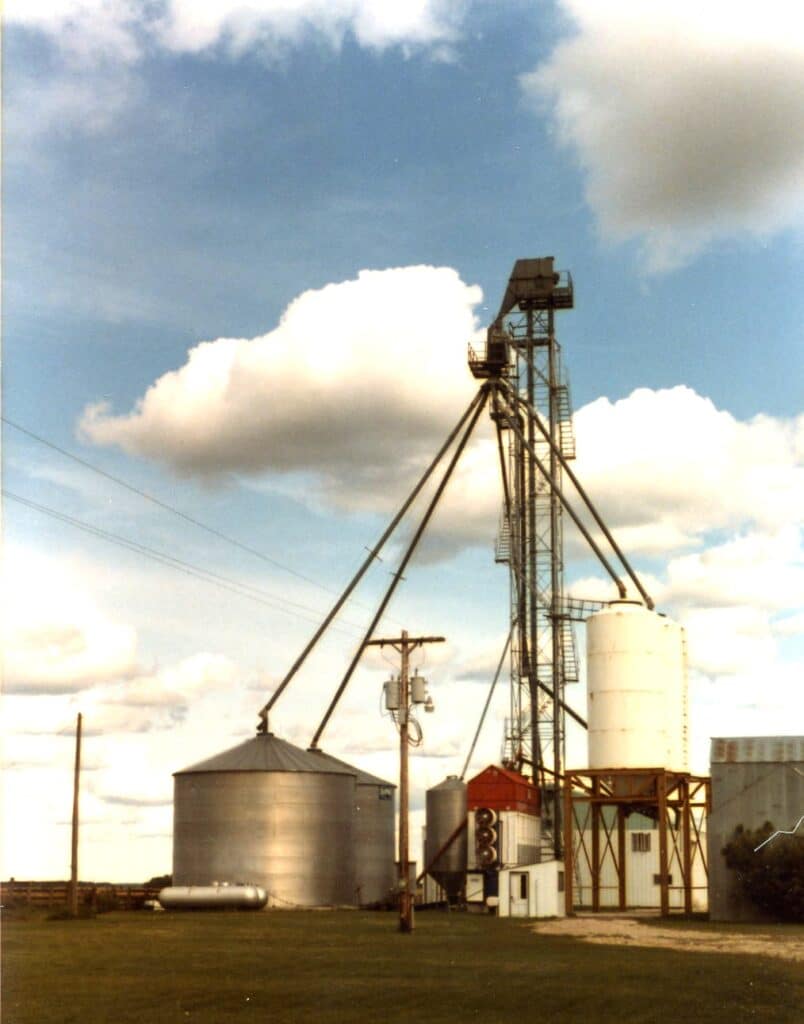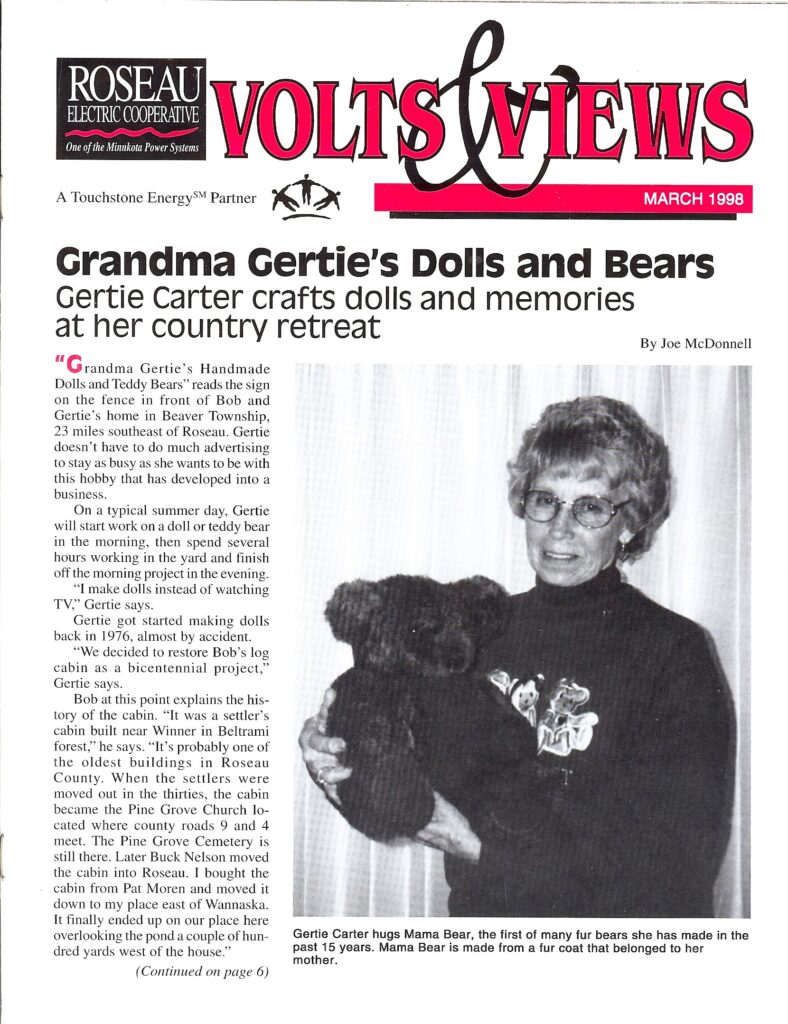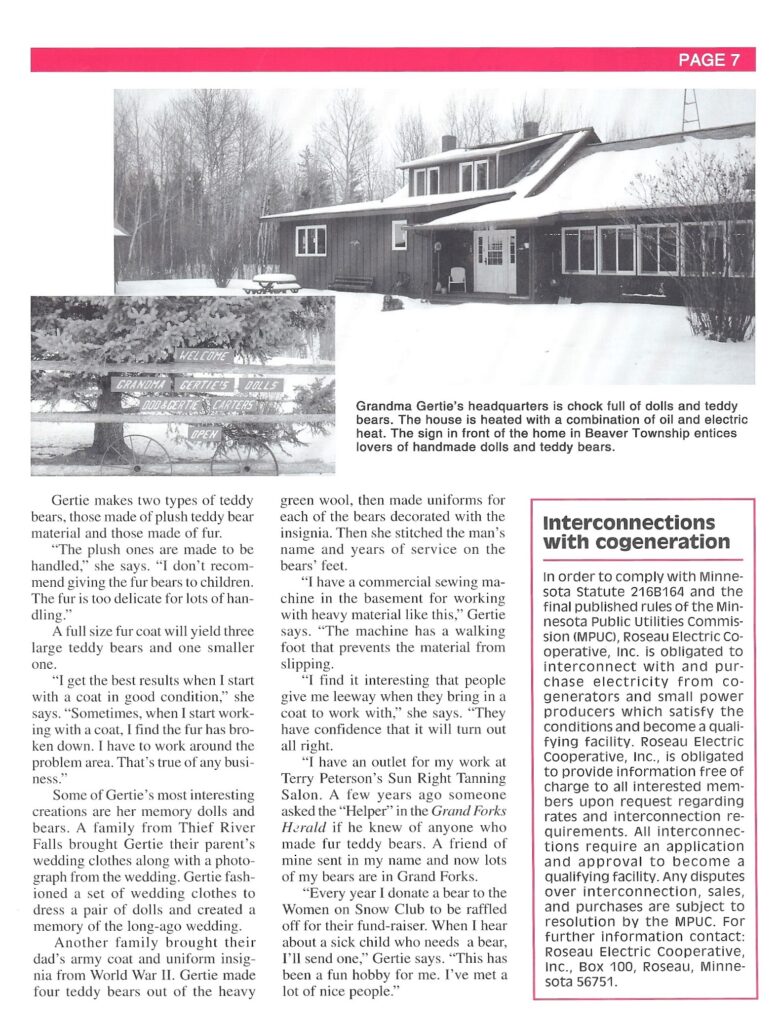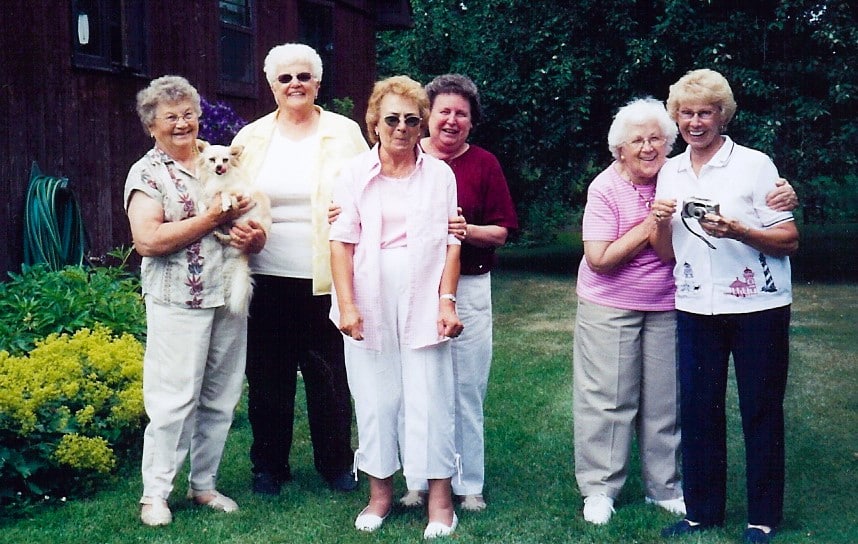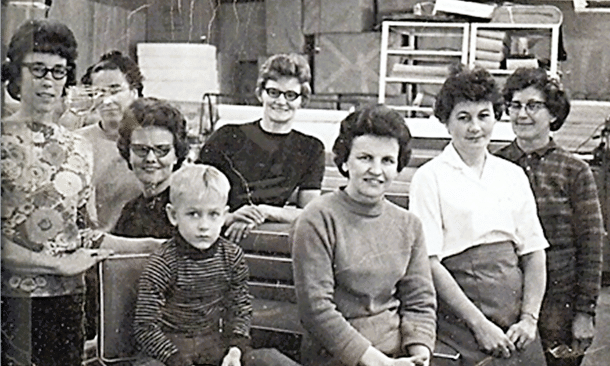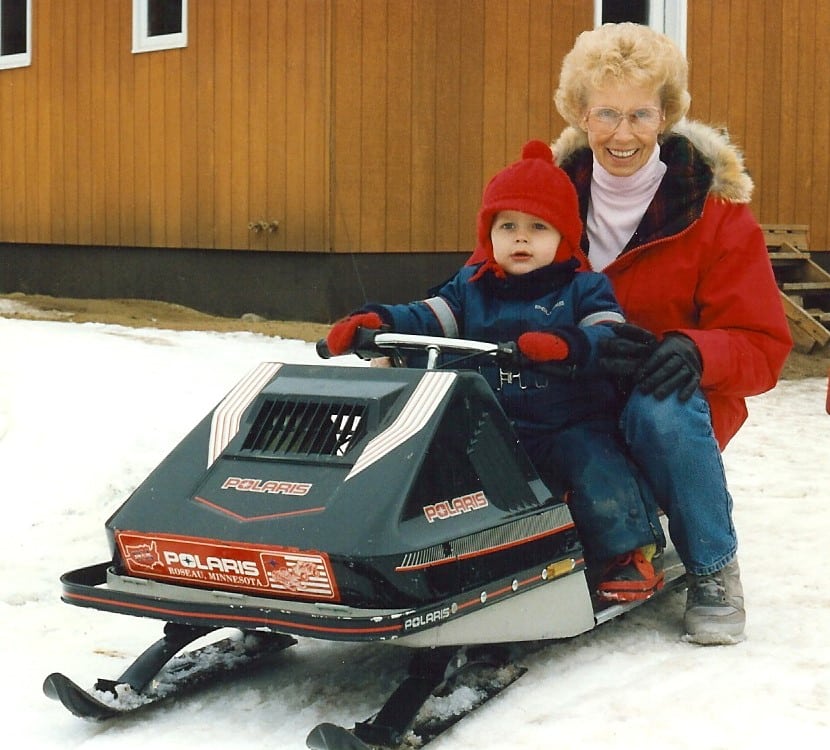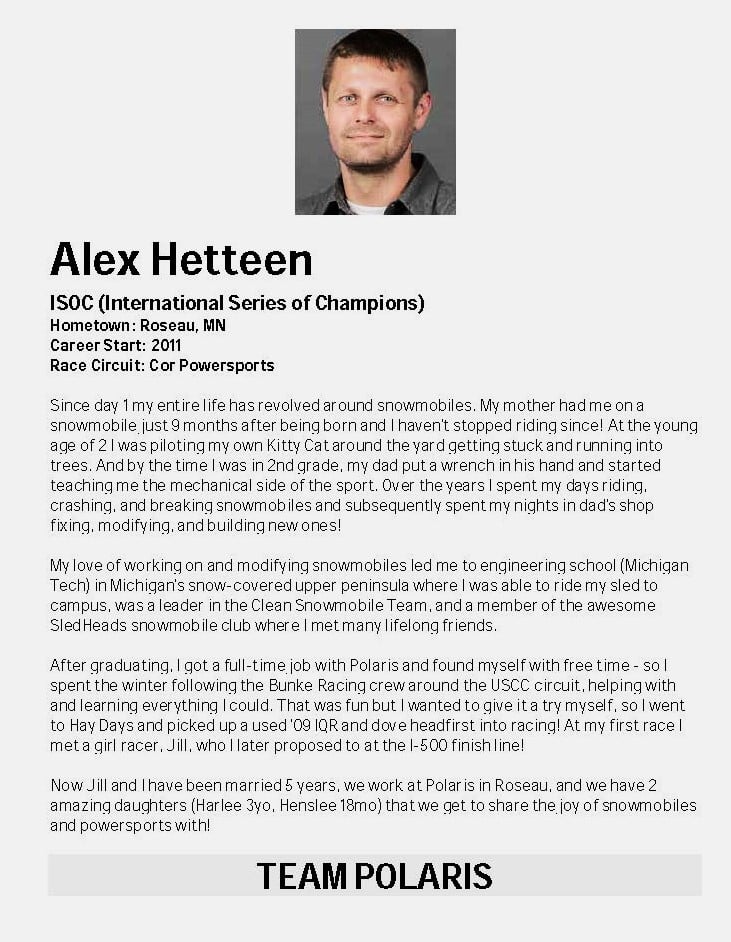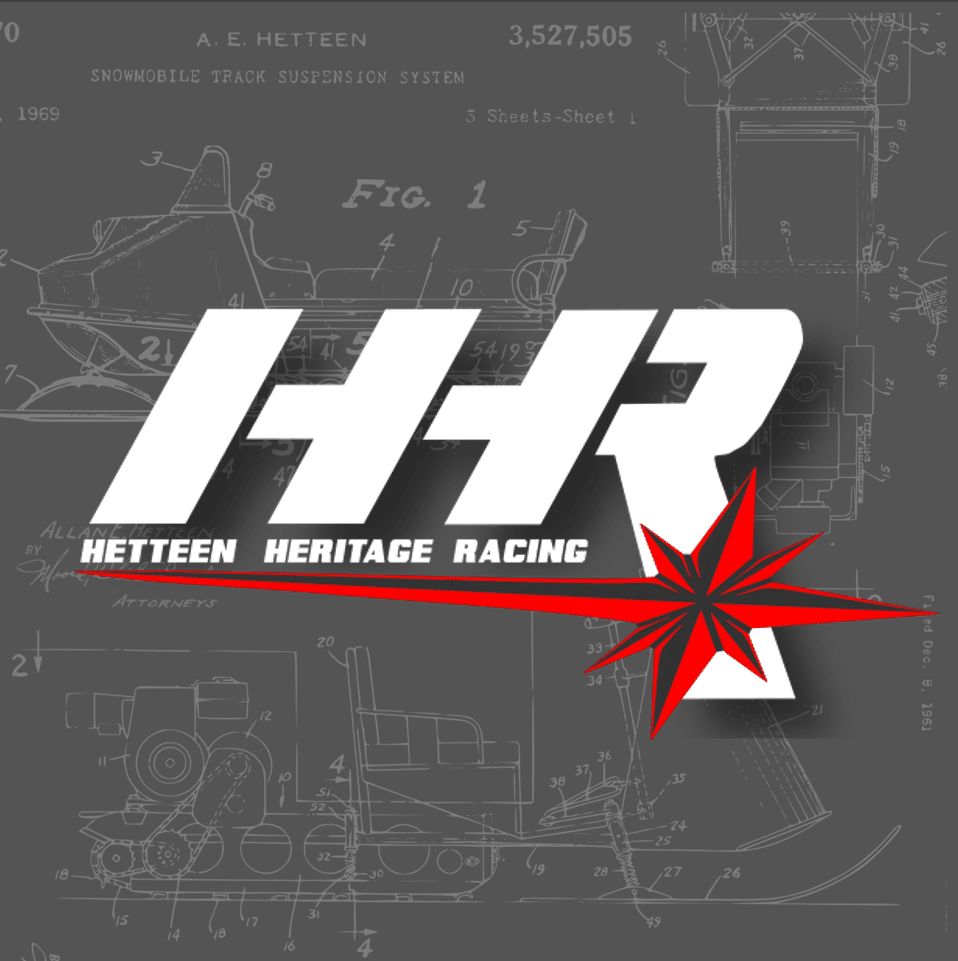Northern Upholstery and the Resilient Gertie Hetteen ~ The Final Chapter 1970 - 1973
Northern Upholstery and Gertie Hetteen…in summary of the previous articles on the journey of Polaris’ First Lady Gertie Hetteen, we’d like to briefly reintroduce 1962 through 1969 briefly from what had transpired in the success of a small upholstery business started in the basement of the Gertie and Allan Hetteen’s home.
Due to the public’s interest in enjoying the winter outdoors on a snowmobile, Polaris snowmobile sales increased. The snowmobile changed how Americans (and their neighbors to the North) saw the challenges and opportunities of winter. While it offered snowbound communities unprecedented opportunities to travel in winter, it also created a totally new kind of winter recreation.
Gertie, with her industrious employees were instrumental in establishing a successful start to the growing company!
The transition from the small family home basement to a larger shop, later moving to a modern production plant was not just a physical move, but a significant milestone in the company’s journey.
Here is a quick look back at the very early years of 1962-1969.
1962 to 1965 ~Photos of the start of Northern Upholstery and the team of seamstresses who brought the company to the forefront!
For further information refer to:
- The Amazing First Lady of Polaris Industries l Gertie Hetteen
- An Amazing Trailblazer for Working Women and Polaris Industries l Gertie Hetteen Part 2 l
- Polaris Industries First Lady~ Gertie Hetteen, Vitality and Enthusiasm ~ Part 3!
As Northern Upholstery grew, so did the goals! Recognizing the need for expansion, Gertie and Allan made the strategic decision to relocate to a spacious, state-of-the-art production plant. This new facility, equipped with the latest technology and designed for efficiency, symbolized the company’s evolution and progress.
Northern Upholstery expands as the snowmobiling became a winter staple! Plans began in the fall of 1966.
"The snowmobile transformed northern winters with faster, easier travel and by making the experience so enjoyable that it became a form of recreation. In the case of many Arctic people, snowmobiling gave them even more mobility in winter than in the summer, enhancing communication among villagers and between villages and towns. With snowmobiles being able to reach the grounds and bring back the game, hunting and fishing takes increased. Further south, people got out and about, visiting friends and taverns, making "snofaris" into the winter landscape, racing, ice fishing at distant ponds, taking themselves and their machines where they had never before been in winter and where machines had never been at all. Sounds of civilization echoed throughout the forest."
Scholar Leonard S. Reich
Northern Upholstery's Production Increases Even More with the Introduction of the Polaris TX Series in 1968!
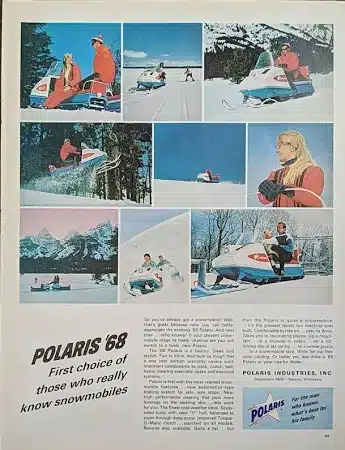
In 1968, Polaris Industries introduced the first of the famed TX series of snowmobiles, a series that was to run for twelve years. The TX was built and bought for performance, power, speed, and for racing. Due to the increased speed of the high-performance sleds, the engineers from Polaris wanted a more cushioned seat to help ride the rough winter terrain. Thus, Gertie and the Northern Upholstery crew produced a six-inch-high soft seat helping to cushion the bumps as riders flew through the air on some of the cross-country races!
Northern Upholstery at Full Production in 1968 and 1969!
Northern Upholstery led by Gertie soon expanded into other divisions. With assistance from her husband, Allan, in obtaining credit from financial institutions and with his advice, the business grew. (As reported in a previous article during the 1960’s and 1970’s banks denied women credit. They were not allowed to open a bank account in their own names. Technically, women won the right to open an account in a financial institution in the 1960s, but yet women had to have their husband’s sign for them to open the account. In 1974, the female gender in the U.S. was finally granted the right to open a bank account in their own name.)
When were women allowed to run a business?
Passed Senate amended (10/11/1988) Women's Business Ownership Act of 1988 - Title I: Congressional Findings and Purposes - Sets forth congressional findings and purposes with respect to small businesses owned and controlled by women. H.R.5050 — 100th Congress (1987-1988)
H.R.5050 — 100th Congress (1987-1988)
The Women’s Business “Ownership Act provided seed funding for women’s business centers through an annual grant process by the Small Business Administration. The SBA provided technical assistance to women in order to form businesses, particularly those who were socially or economically disadvantaged.”
~Wikipedia~

Gertie employed a number of high school students for the summer months and part-time during the school year. These four part-time students eventually became long-term employees of Polaris Industries in their adulthood.
CLICK ON EACH PHOTO TO FIND OUT WHO THEY ARE.
Northern Upholstery Expanded Once Again! In 1970 Rosco, Inc., becomes a Tenant!
On June 1, 1970, Allan Hetteen retired from Polaris, a Textron Company. Textron Inc., an American industrial conglomerate located in Providence, Rhode Island, had purchased Polaris Industries in 1968. During Allan’s retirement negotiations with the Textron group it was the consensus he would continue to have ties with Polaris, thus the distributorship through mutual agreement was settled.
Following Allan’s retirement from Polaris Industries, Allan became the owner and president of the Polaris distributorship, Rosco, Inc. in 1970.
Gertie and Allan determined Rosco, Inc. would become a tenant in the Northern Upholstery building.
Due to the increase with all the new divisions added inventory, the need for an office plus a large warehouse for Rosco’s parts department, it became necessary for further expansion.
"Rosco, for lack of quarters of its own, became a tenant in the Northern Upholstery building and its demands for space plus the growth of Northern Upholstery have resulted in recent expansions."
Warren Strandell, Valley Editor Grand Forks Herald, Grand Forks, ND
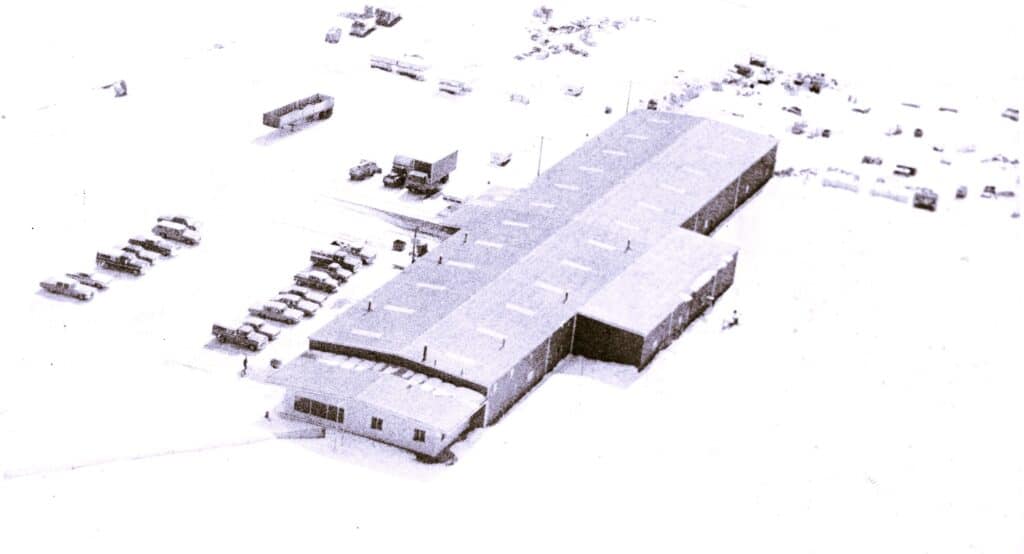
“Brick and mortor may make a building. It’s the employees that make the company!”
Northern Upholstery manufactured snowmobile seats for both Polaris Industries in Roseau and Beausejour, Manitoba.
At this time, Northern Upholstery began to expand by diversifying. The information of each acquisition is summarized below.
The Gallant Furniture and Drapery Division
The Gallant Furniture and Drapery Division manufactured furniture and draperies for Detroiter Mobile Homes located in Red Lake Falls, Minnesota. In addition, apartment sized furniture was produced and available for sale to the general public
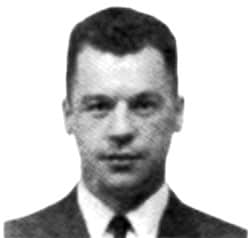
The Gallant furniture showroom featured a variety of designs and fabrics in the front lobby available for both the vendors and the public to view.
The Gallant Sportswear Collection Division
The Gallant Sportswear Division produced seasonal outerwear and was distributed by Rosco, Inc. The jackets featured a red, white, and blue stripe on the front side, a tribute to the colors of Polaris snowmobiles. The 1970-1971 Polaris Industries Factory Race Team and the Rosco Race Team wore suits designed by the Gallant Sportswear Collection Division. The photos below show the Polaris Team wearing windbreakers made for mild weather. The Rosco Race Team is wearing winter jackets.
The Trail Master Division
The Trail Master pickup toppers was another division brought in by Amco. The toppers were produced both in Red Lake Falls and Roseau. The product was sold throughout the United States.
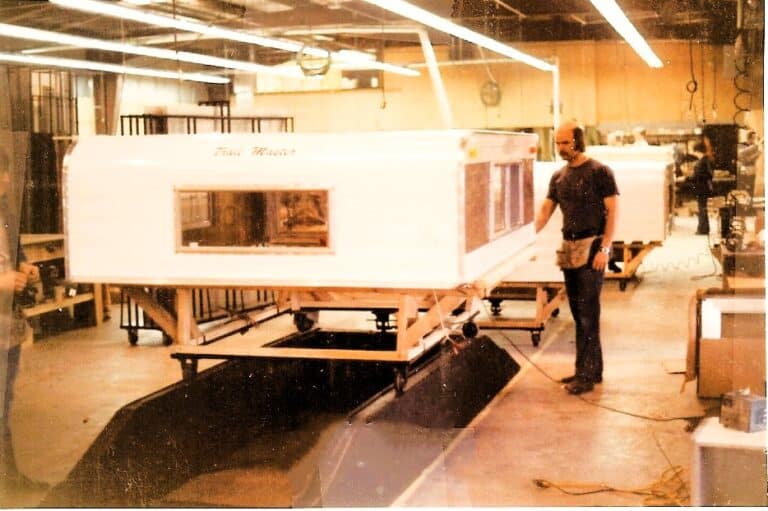
Rosco, Inc., a Polaris Distributor
Rosco, Inc, as a distributor, was responsible for supplying snowmobiles to dealerships for retail sales. Rosco provided dealers with a range of snowmobile models. The company ensured dealers would have access to a selection of different models to meet consumer demand. The company staff also provided technical assistance, training and marketing assistance to help dealers promote and sell their snowmobile products effectively. The service area included upper northern Minnesota, North Dakota and South Dakota.
The Rosco Race Team
Allan was a proponent of utilizing a racing program to promoted the product. Allan formed the Rosco Race Team and directed the program from 1970 through the 1972 race season. At the start of the 1972-1973 race season, Allan offered an incentive program called “Racing for Gold” because the Rosco Race Team had dissolved. This program was available to dealers and independents drivers within the distributorship area ending in March 1973.
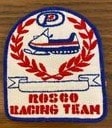
The Rosco Race Team Patch created by Gertie Hetteen.
Because the distributorship serviced a large demographic area, it became necessary for the race team to split up as three separate teams. There would usually be two drivers per team on some weekends. On other weekends, the entire team would travel and compete together. Participation at dealer sponsored races throughout the tri-state area included more than competing on the race track. The race team utilized their technical skills by demonstrating to the dealer or customer how to diagnose an unwelcomed issue, the use of the proper tools and equipment for repairs.
Allan was an advocate of snowmobile safety. He believed his employees should practice safety measures and promote safety to the customers. The drivers knew the best representation of Rosco and the Polaris products were to set an example of good communication, teamwork, excellent customer service, problem-solving, plus performing 110% on the track!
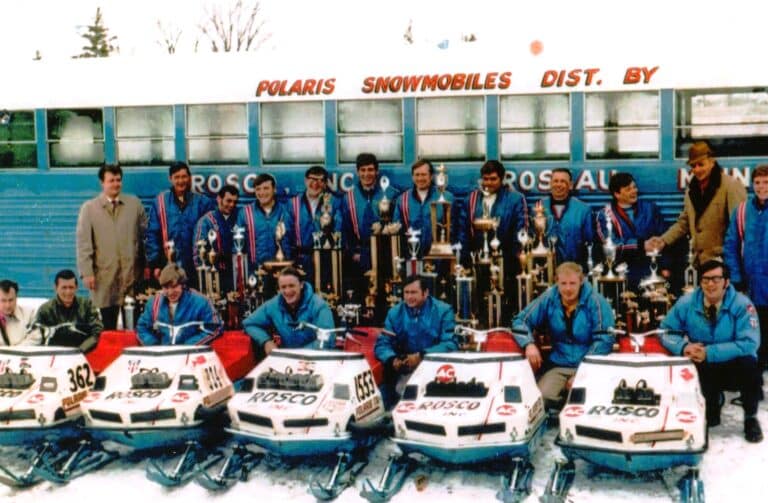
Back row, left to right: Gene Fichter-General Manager; Richard Sovde Support; Ed Mansuetto-Driver; Larry Grube-North Dakota Driver; Ron Grube-North Dakota Driver; Bob Przekwas-Driver; Roger Helgeson-Driver; Duane Opdahl-Driver; Tony Burkel-Driver; Wayne Burkel-Driver; Allan Hetteen-Owner and President of Rosco, Inc.; Lonnie Hagen-Support.
Front row, left to right: Dale Amundson-Controller; Jim Wagner-Parts Manager; Steve Hetteen-Sales; Clayton Brandt-Sales; Jim Ploof-Sales Manager; Del Larson-Sales, Roger Powell-Sales.
Over the course of the two years of the teams’ racing program, the drivers were successful in the winner’s circle, winning major races through the Midwest. Several of the team members qualified in high points for the USSA Central Division enabling them to compete at the World’s Series of Snowmobiling at Booneville, New York.
The racing program came to an end in March, 1972, due to the high cost of operating a race team along with the reduced snowmobile sales in the consumer market.
Rosco Surplus
The Rosco Surplus store was another outlet for the consumers operated by Rosco, Inc. The store was created to handle used snowmobiles and excess inventory from Polaris.
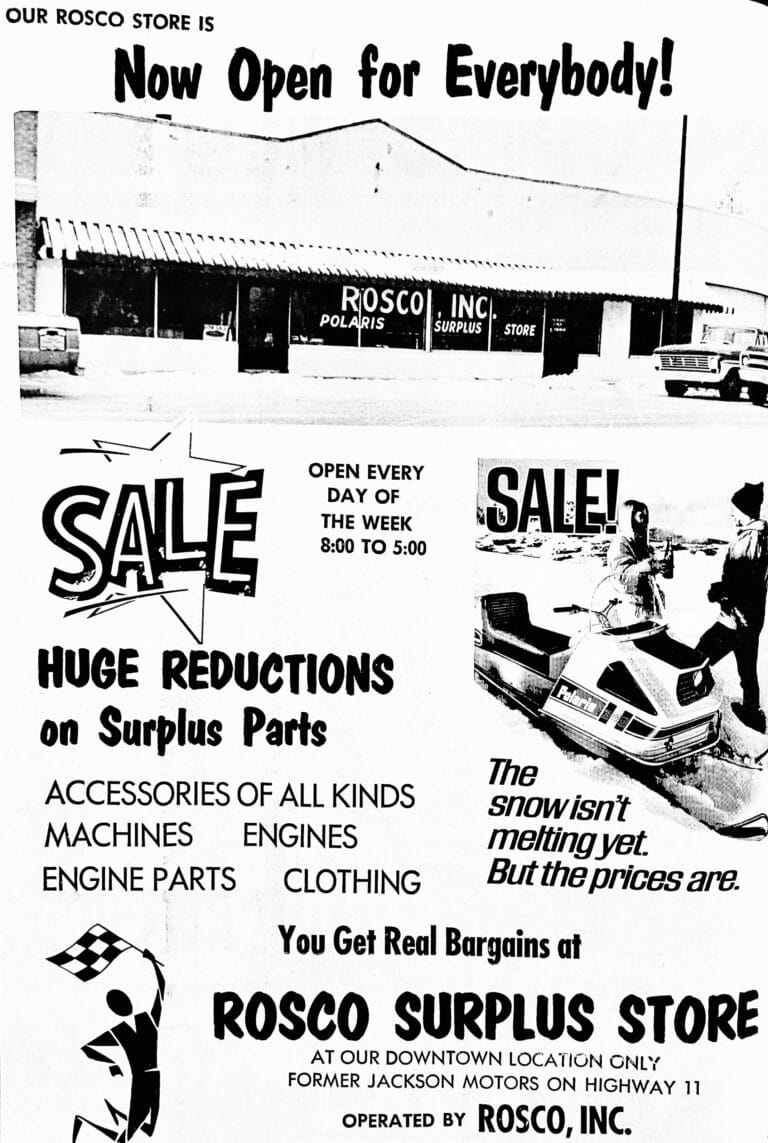

1973 ~ The End of a Dynasty
"In the early 1970s, as the initial "oil crisis" raised its ugly head, snowmobile industry experts viewed the business with excitement. By 1973, snowmobile industry experts began backing off earlier predictions of one million sled sales by 1973-1974. Experts had predicted sales to continue to 700,000 by 1972; 900,00 by 1973, and upwards of one million by 1974. The reality started to hit when only 587,000 sleds were sold in 1971-1972. Response within the industry was mixed."
Jerry Bassett
The 1973 Oil Embargo severely weakened a U.S. economy that had grown increasingly dependent on foreign oil. The 1973 energy crisis, also known as the Oil Shock of 1973–74, was a period of escalating energy prices and fuel shortages caused by an embargo by Arab oil-producing nations in response to U.S. support for Israel during the Yom Kippur War.
Polaris sold a record 30,000 snowmobiles during the 1970–71 season, but business declined sharply after that. The 1973 OPEC oil embargo and the ensuing energy crisis transformed snowmobiling into a luxury activity that many Americans could not afford. Sales plummeted. More than a dozen snowmobile manufacturers got out of the business. Polaris survived by cutting production and reducing its workforce.
Northern Upholstery and Rosco, Inc., were affected negatively as well. On March 15, 1973, Rosco, Inc., a Polaris distributor shut down.
Northern Upholstery Production of Snowmobile Seat Cushions Ends in 1973.
In the summer of 1973, Northern Upholstery no longer produced seats cushions for Polaris Industries. The seat production would be done in-house at the Polaris factory.
Navigating Tragedy
On November 12, 1966, Gertie and Allan lost their thirteen-year-old son Timmy in a tragic hunting accident.
Timothy (Timmy) Jon Hetteen, age 13 years.
His grieving mother writes, "Timmy loved guns and hunting. He had just completed his gun training so was able to go deer hunting with his dad and Steve at the hunting camp north of Salol. Ironically this is where he spent his last hours of life. He finished hunting for the day as the other hunters were also returning to the camp, except he wanted a snowmobile ride before dark. He worked on his machine for fifteen minutes before he got it going, still dressed in his red clothes, and as he rode just a short way he was tragically hit three times by another hunter who said he thought he was shooting at a deer!"
Gertie Hetteen
She goes on to say, “We, of course, were devastated and had great difficulty resuming our lives in the days ahead. Tim was such a great part of our family and our only consolation was in knowing he was safe at home with his Lord. I can still see Timmy’s smile as he left for camp the night before hunting season opened. Thirteen short years we had all enjoyed him.”
It was a life and legacy that ended too soon!

"I Lost All Interest ..."
In an interview with Joe McDonnell, writing for the Roseau Electric Volts and Views Newsletter, Gertie stated, “After Allan died, I lost all interest in running the business.”
In 1974, Gertie retired from the company.
- She sold the company to Marlin Matheny of Red Lake Falls, Minnesota.
- The Gallant Drapery Division was acquired by Lois and Adrian Larson, both long-term employees of Northern Upholstery.
- The remaining inventory from Rosco and the surplus store was purchased by Gene Fichter.
- In 1975, the business came to an end.

1975 Brings a New Chapter to Gertie's Life
Losing a loved one can be incredibly difficult, both emotionally and logistically. The experience often comes suddenly and is certain to cause a flood of overwhelming emotions. Gertie experienced immense loss within a six-year span. Losing a child and then her husband, both unexpected, was devastating enough. Imagine having to deal with the responsibilities of retiring from a business built from an idea which grew into a large corporation and most importantly, raising three beloved sons on her own. Gertie did!
Those who knew Gertie will remember and respect her gutsy attitude, her ability to overcome the cultural issues as a woman running a manufacturing company and the challenges which go with day-to-day operations, the economic uncertainty, and most of all, the personal tragedies. Gertie faced closure of the businesses she and her husband built together with grace and dignity. Her faith in God, support from her family, friends, and former employees enabled her through this process. Dale Amundson, the controller from the company worked with her on the financial obstacles. Long-time friends and employees, Lois and Adrian Larson provided support on many levels. Bob Carter was the legal advisor and her brother-in-law, Edgar Hetteen, became a partner with Amco, Inc. following his younger brother’s death.
Working to resolve details on legal matters and issues which arose when closing down the corporation, Gertie and Bob became friends which eventually led to their marriage. Gertie and Bob were married on June 3, 1975. They converted a hunting cabin into a permanent home in Beaver Township, south of Wannaska, Minnesota.
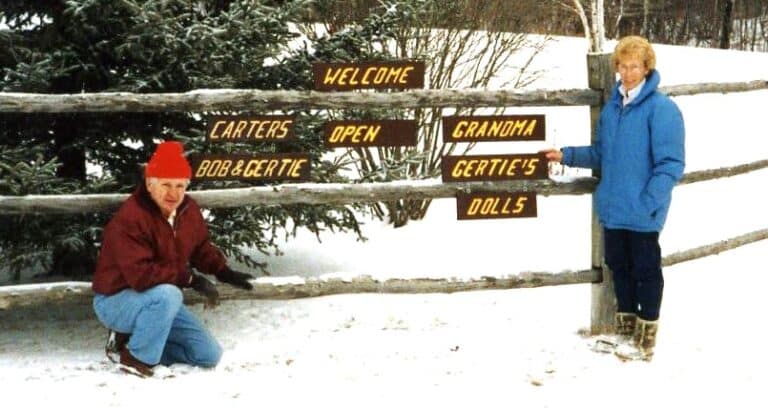
Gertie was never one to sit still, she loved to garden and continued with her creativity.
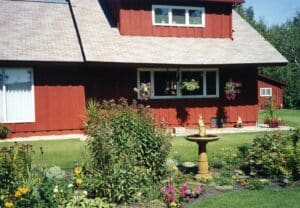
In 1976 she started making dolls and bears as a hobby.
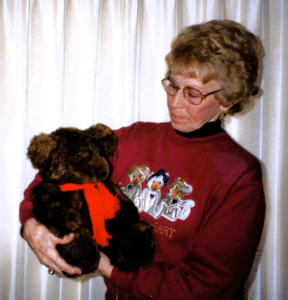
Her hobby soon developed into a business called “Grandma Gertie’s Dolls and Bears.”
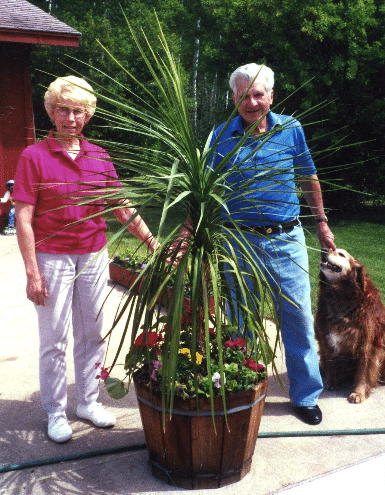
After Bob Carter passed away at the age of 83 on September 6, 2000, Gertie continued living in their home south of Wannaska. She kept busy spending time with her family, friends and being active in her hobbies and numerous organizations.
Gertie, her friends/employees from the Northern Upholstery days enjoyed gathering at Gertie’s home. The two photos below show some of the ladies. The photo on the left was taken in 2001, the photo on the right in 1966.
Gertie..your life was a blessing, your memory a treasure.
Gertrude (Gertie) Hetteen Carter passed away at the age of 73 on January 23, 2004
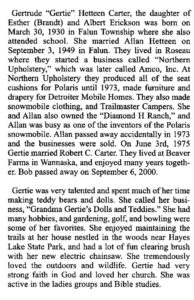
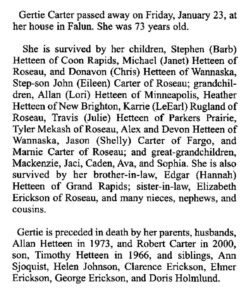
Gertie lived her life with vitality and strength. God and her family were the most important in her life. She cared about her community and country. Through her efforts and support, Gertie made a difference in so many people’s lives with her motivation. Her commitment to building a business and initially hiring women had an impact on the northern Minnesota rural community.
The legacy and spirit live on through the second, third, and fourth generations of Allan and Gertie, all outdoor enthusiasts. Currently, several of the grandsons are involved with snowmobile racing. Alex and Devon, the sons of Donavon and Chris Hetteen, own and race for Hetteen Heritage Racing.
“The more you dream the more you achieve.”
~Michael Phelps~
To learn more about Polaris and its history, visit the Polaris Experience Center in Roseau, Minnesota.
Visit the Polaris Experience Center Website
Researched and written by: Carmen Przekwas
Digital Creator: Sinnamon Krings, Roseau Promotions Director
All Rights Reserved: Carmen Przekwas
References: Mike Hetteen, Donavon Hetteen, Hetteen/Carter Archives, Roseau County Historical Society, Roseau Times Region, Grand Forks Herald, Roseau Electric Cooperative Volts and Views, YouTube, Hetteen Heritage Racing, Karolyn Eastman, Robert Przekwas, Patricia Mann


